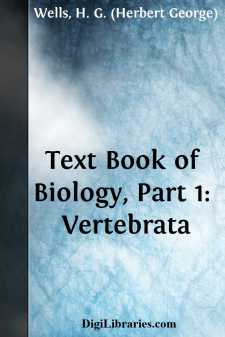Categories
- Antiques & Collectibles 13
- Architecture 36
- Art 48
- Bibles 22
- Biography & Autobiography 813
- Body, Mind & Spirit 142
- Business & Economics 28
- Children's Books 17
- Children's Fiction 14
- Computers 4
- Cooking 94
- Crafts & Hobbies 4
- Drama 346
- Education 46
- Family & Relationships 57
- Fiction 11829
- Games 19
- Gardening 17
- Health & Fitness 34
- History 1377
- House & Home 1
- Humor 147
- Juvenile Fiction 1873
- Juvenile Nonfiction 202
- Language Arts & Disciplines 88
- Law 16
- Literary Collections 686
- Literary Criticism 179
- Mathematics 13
- Medical 41
- Music 40
- Nature 179
- Non-Classifiable 1768
- Performing Arts 7
- Periodicals 1453
- Philosophy 64
- Photography 2
- Poetry 896
- Political Science 203
- Psychology 42
- Reference 154
- Religion 513
- Science 126
- Self-Help 84
- Social Science 81
- Sports & Recreation 34
- Study Aids 3
- Technology & Engineering 59
- Transportation 23
- Travel 463
- True Crime 29
An Introductory Course of Quantitative Chemical Analysis With Explanatory Notes
by: Henry P. Talbot
Description:
Excerpt
PART I
INTRODUCTION
SUBDIVISIONS OF ANALYTICAL CHEMISTRY
A complete chemical analysis of a body of unknown composition involves the recognition of its component parts by the methods of !qualitative analysis!, and the determination of the proportions in which these components are present by the processes of !quantitative analysis!. A preliminary qualitative examination is generally indispensable, if intelligent and proper provisions are to be made for the separation of the various constituents under such conditions as will insure accurate quantitative estimations.
It is assumed that the operations of qualitative analysis are familiar to the student, who will find that the reactions made use of in quantitative processes are frequently the same as those employed in qualitative analyses with respect to both precipitation and systematic separation from interfering substances; but it should be noted that the conditions must now be regulated with greater care, and in such a manner as to insure the most complete separation possible. For example, in the qualitative detection of sulphates by precipitation as barium sulphate from acid solution it is not necessary, in most instances, to take into account the solubility of the sulphate in hydrochloric acid, while in the quantitative determination of sulphates by this reaction this solubility becomes an important consideration. The operations of qualitative analysis are, therefore, the more accurate the nearer they are made to conform to quantitative conditions.
The methods of quantitative analysis are subdivided, according to their nature, into those of !gravimetric analysis, volumetric analysis!, and !colorimetric analysis!. In !gravimetric! processes the constituent to be determined is sometimes isolated in elementary form, but more commonly in the form of some compound possessing a well-established and definite composition, which can be readily and completely separated, and weighed either directly or after ignition. From the weight of this substance and its known composition, the amount of the constituent in question is determined.
In !volumetric! analysis, instead of the final weighing of a definite body, a well-defined reaction is caused to take place, wherein the reagent is added from an apparatus so designed that the volume of the solution employed to complete the reaction can be accurately measured. The strength of this solution (and hence its value for the reaction in question) is accurately known, and the volume employed serves, therefore, as a measure of the substance acted upon. An example will make clear the distinction between these two types of analysis. The percentage of chlorine in a sample of sodium chloride may be determined by dissolving a weighed amount of the chloride in water and precipitating the chloride ions as silver chloride, which is then separated by filtration, ignited, and weighed (a !gravimetric! process); or the sodium chloride may be dissolved in water, and a solution of silver nitrate containing an accurately known amount of the silver salt in each cubic centimeter may be cautiously added from a measuring device called a burette until precipitation is complete, when the amount of chlorine may be calculated from the number of cubic centimeters of the silver nitrate solution involved in the reaction....












